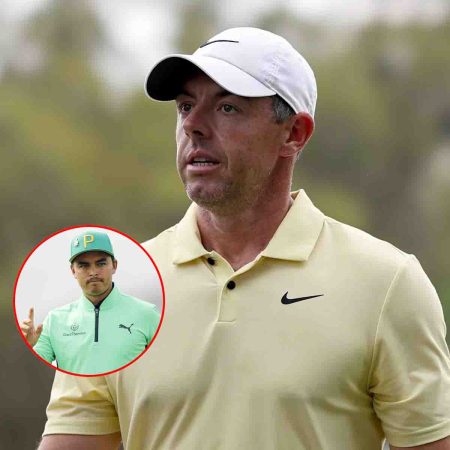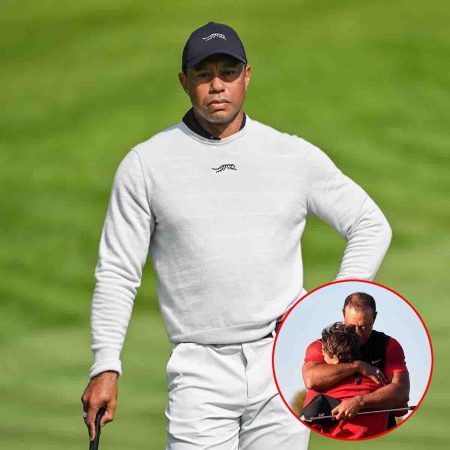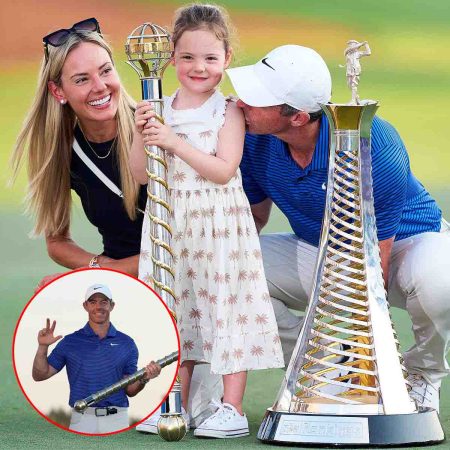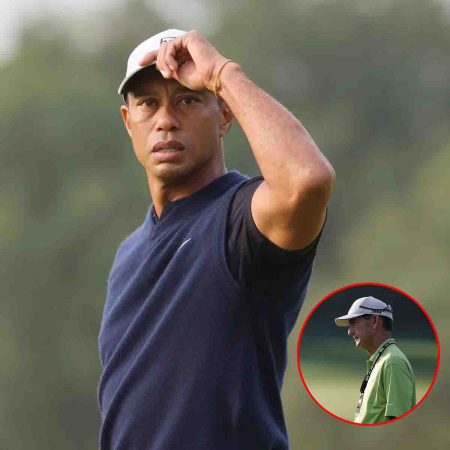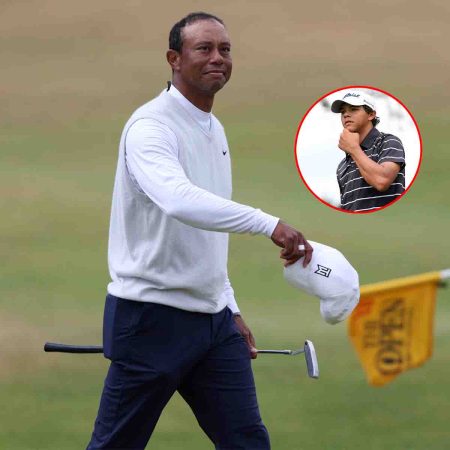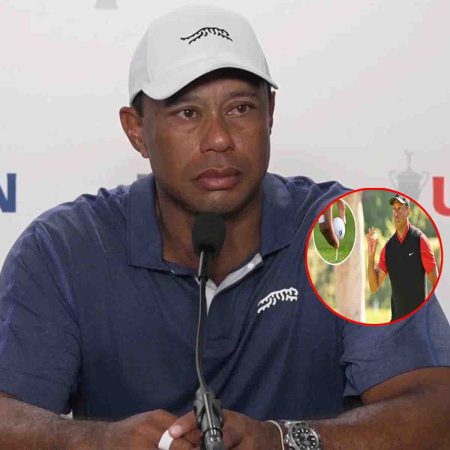The tragedy that occurred on January 26, 2020, is still a wound that won’t close for basketball fans worldwide. Kobe Bryant, one of the greatest talents the NBA has ever seen, passed away in a helicopter crash in Calabasas, California.
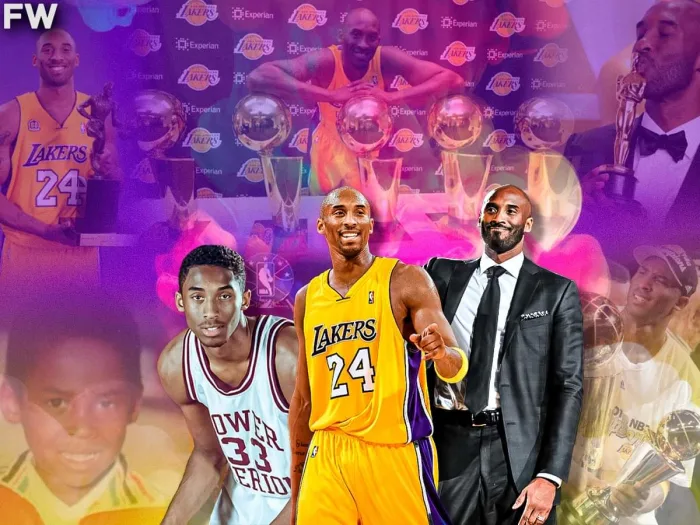
What made the news even sadder was the fact that Kobe’s daughter, Gianna Bryant, was also with him. She was only 13 years old.
Along with the Bryants were John and Keri Altobelli, their daughter, Alyssa; Sarah Chester and her daughter, Payton; and Christina Mauser, who was an assistant coach.
The pilot, Ara Zobayan, was also killed in the crash. The group was on their way to play in a youth basketball tournament at Kobe’s Mamba Sports Academy.
Even though Kobe is gone from this world, his memory will live on forever. We all have a little Black Mamba in us, and when we channel it, we’ll think of Kobe…
Now, enough of the terrible situation that occurred on January 26, 2020. Let’s remember the life that Kobe Bryant lived and how he inspired us all.
This is the biography of the Black Mamba, Kobe Bryant.
Little Mamba: The Beginning
On August 23, 1978, in Philadelphia, Pennsylvania, Kobe Bryant was born to NBA player Joe Bryant and his wife, Pam Bryant. At three years old, Kobe would watch his father play basketball on TV.
After watching his father play professional basketball at a young age, Kobe knew that was exactly what he wanted to do with his life. Things, though, wouldn’t be easy for Kobe.
After eight seasons in the NBA, an expired contract, and no NBA team offering him a new one, Joe decided to move his family to Rieti, Italy, to play in the Italian league. Kobe was six when his family moved overseas, and this crushed young Kobe.
The Black Mamba had dreams of playing basketball in the schools in Philadelphia, but now he had to start all over in a strange new place. Kobe was the only African American child in his new Italian school, and this made him feel like an outsider.
Not only did Kobe not know the language, but the other boys his age didn’t play much basketball. Instead, they lived for the game of choice was football (soccer).
When Kobe was seven, he had only one friend, and that was his first leather basketball. Kobe even slept with the ball; it gave him a sense of home, back in America, back in Philadelphia.
All Kobe wanted to do was play basketball against the other boys to grow his skills. This was not so easy for young Kobe. The Italian kids would play soccer on the basketball courts by setting up goals under the basketball hoops to play pick-up soccer.
Kobe wanted to play basketball, and he was determined to play in any way possible. The Black Mamba found a way, and it truly shows his dedication to the game he loved.
Kobe would sneak out by jumping off the balcony of his house, and he’d cross a busy road to reach a church playground where the kids weren’t playing soccer. The church had a basketball hoop, and Kobe would spend hours at a time shooting and perfecting his game.
Kobe would eventually play soccer with the Italian kids, and he finally started to make friends. Once the kids were done playing soccer and left, Kobe would stay to continue to work on his basketball game.
When it comes to watching the NBA in Italy, Kobe wasn’t. Well, not live games, at least. At that time, Italy did not broadcast NBA games, but Kobe would get to watch the games, thanks to his grandfather.
Kobe’s grandfather would videotape NBA games off the TV in America, and he’d send the tapes to Kobe. Once Kobe had the tapes, his mental workout of learning the game would begin.
Kobe would eventually participate in organized basketball in Italy, where he’d learn the fundamentals of the game. In fact, Kobe once said that in kids Italian basketball, they never held any scrimmages.
Kobe’s game continued to grow, and he was feeling confident. When Kobe was 12, he and his family traveled back to Philadelphia during the summer.
There, Kobe would play in Philadelphia’s famous Sonny Hill Future League. Kobe wanted to show the kids from Philly how good he was. Unfortunately, this wouldn’t go as planned for young Kobe.
Kobe was held scoreless the entire summer. His skills didn’t match that of the American kids, and this was a crushing blow to the young Black Mamba.
Kobe once recalled this moment in an interview with The Players’ Tribune:
“Zero. That’s the number of points I scored the entire summer while playing in Philadelphia’s Sonny Hill Future League when I was 12 years old. I didn’t score. Not a free throw, not an accidental layup, not even a lucky throw-the-ball-up-oops-it-went-in basket.”
It’s well known that Kobe Bryant admired Michael Jordan. This incident in the Sonny Hill Future League is the moment that led to Kobe idolizing Jordan.
“I considered maybe just giving up basketball and just focusing on soccer,” Kobe said. “Here’s where my respect and admiration for MJ was forged. I learned that he had been cut from his high school team as a freshman; I learned he knew what it felt like to be embarrassed, to feel like a failure. But he used those emotions to fuel him, make him stronger, he didn’t quit. So, I decided to take on my challenge the same way he did. I would channel my failure as fuel to keep my competitive fire burning.”
Kobe was looking forward to playing in the Sonny Hill Future League again. He made a promise to himself that not only would he score, but he’d dominate the competition in Philly.
Kobe would play in the Sonny Hill Future League in the next two summers. By his second summer, Kobe wasn’t the best player, but he improved… by a lot. By Kobe’s third summer, he was the best player at the Sonny Hill Future League.
When Kobe was 13, his family moved back to Philadelphia for good after his father retired from playing professional basketball. This allowed Kobe Bryant to attend Lower Merion High School, which is near Philadelphia.
As a freshman, Kobe not only made the varsity team but was also named a starter. Despite this great achievement, Kobe’s team struggled, going 4-20.
Like when he was held scoreless in the Sonny Hill Future League, Kobe would avenge his troubles on the basketball court.
Kobe and his Lower Merion team would figure out their game plan, and in Kobe’s last three years in high school, his team went 77-13. At just 13 years old, Kobe showed his Mamba Mentality when he felt like he was disrespected.
The Street and Smith basketball rankings came out for high school players, and it had Kobe ranked as the 57th-best high school basketball player in the country. In Kobe’s mind, this list was incorrect. So, he created his own list… a kill list.
Kobe went down the list, from 56 to 55, all the way to the number one ranked high schooler in the country. When Lower Merion hit the AAU travel circuit, Kobe would hunt down the players ahead of him and destroy them, successfully crossing them off his kill list.
As a junior, Kobe averaged 31.1 points, 10.4 rebounds, and 5.2 assists per game. Kobe was named Pennsylvania Player of the Year.
As a senior, after his team started the season 1-3, Kobe led Lower Merion to 30 straight wins, and he led Lower Merion to their first PIAA state championship since 1943 in a 48-43 win against Erie Cathedral Prep.
Kobe was named the Naismith High School Player of the Year, the Gatorade Men’s National Basketball Player of the Year, a USA Today All-USA First Team player, and a McDonald’s All-American.
Kobe’s 2,883 points during his high school career were enough to pass the great Wilt Chamberlain for the most points in southeastern Pennsylvania history.
After high school, Kobe had plenty of colleges interested in him, but he chose a different route. Kobe decided to take his talents to the NBA.
A Draft Night Trade Sends Kobe To Lakerland
Kobe Bryant was not drafted by the Los Angeles Lakers. He was selected 13th overall by the Charlotte Hornets, but the team didn’t feel like they needed Kobe.
So, the Hornets made a draft day trade with the Lakers, sending Kobe to Hollywood in exchange for Vlade Divac. This trade would later prove that Charlotte was wrong in their assumption of Kobe’s worth.
At first, they appeared to be right, as Kobe didn’t see much playing time since the Lakers had plenty of talented guards, like Eddie Jones, Nick Van Exel, and Byron Scott. Oh, and the Lakers required Shaquille O’Neal that summer, meaning the offense would run through him.
As a rookie, Kobe would appear in 71 games, including starting six of them. But he’d only see 15.5 minutes per game. In the playoffs, young Kobe had a humbling experience in Game 5 of the first-round series vs. the Utah Jazz.
Kobe airballed four threes at the end of regulation and overtime in the Lakers’ 98-93 loss in overtime. After the game and series were over, Kobe flew back to LA and stayed up all night practicing his shooting, showing his willingness to get better.
By his second season, Kobe made history by becoming the youngest player selected as an All-Star starter.
In the game, Kobe went toe to toe with his idol, Michael Jordan, and scored 18 points on 7-16 shooting. Their duel appeared to be a passing of the torch from Jordan to Kobe.
Kobe and the Lakers wouldn’t see much success in 1998 or 1999, as they were swept out of the playoffs both times. By the 1999-00 season, a big change would come the Lakers’ way, giving them the best opportunity to win with Kobe and Shaq on the team.
Kobe And The Lakers 3-Peat
The legendary head coach of the Michael Jordan led-Chicago Bulls was Phil Jackson. He led Chicago to six NBA championships in the 1990s, and he managed superstar egos in Michael Jordan and Scottie Pippen.
Now, Jackson had to handle Shaquille O’Neal and Kobe Bryant’s egos, and this was a job he was willing and capable of handling. The Lakers went on to win 67 games, the most for a team with Kobe Bryant on the roster.
The Lakers would make the Western Conference Finals and play the Portland Trail Blazers. Although the Lakers were the heavy favorites, Portland didn’t back down and played LA tough.
After the Lakers took a 3-1 lead, the Trail Blazers stormed back to tie the series at 3-3. Game 7 ended up being a classic. The Lakers trailed by 15 points with 10 minutes left in the game. All looked doomed for the team from Hollywood until they went on a magical run.
The Lakers went on a 31-13 run, clearly dominating the game. At one stretch, the Trail Blazers missed 13 straight shots. Los Angeles finally looked like the team that won 67 games during the regular season; they were simply unstoppable.
The game essentially ended when Kobe crossed over Scottie Pippen and lobbed it to Shaq, who finished with a monstrous slam dunk. LA escaped with an 89-84 victory, sending them to the NBA Finals, the first of Kobe’s young career.
The Lakers met the Indiana Pacers in the Finals, and the only real drama they saw was Kobe injuring his ankle on a jump shot and landing on Jalen Rose, who admitted later he stuck his foot out on purpose.
Still, Kobe would miss only one game (Game 3) and return to get his revenge in the final moments of Game 4. The game went into overtime, and with 2:33 remaining, Shaq fouled out.
Kobe proceeded to take over. He hit two huge jump shots to keep the Lakers in the game. Then, with 5.9 seconds remaining in the game, after the Lakers couldn’t get the ball into Kobe’s hands, Brian Shaw took a running jumper. Shaw would miss his shot, but who was there for the putback? Kobe Bryant.
The Lakers won the game 120-118, with Kobe scoring 8 points in the overtime, shooting 4-5 from the field. LA eventually took home the championship in six games, and Kobe was finally an NBA champion.
Things would continue to get better for Kobe in the next two years. He’d see his role on the team continue to expand, raising his scoring average as high as 28.5 in the 2000-01 season.
Kobe’s Lakers would win two more titles in 2001 against the Philadelphia 76ers and the New Jersey Nets in 2002. He won his first All-Star game MVP in 2002 after scoring 31 in the game held in Philadelphia.
Oh, and Kobe got married on April 18, 2001, to Vanessa Laine, whom he met on the set of a music video. Even though things were looking great for Kobe during this time, there were also some negative stories surrounding his name, and the worst was about to arrive in July 2003.
Kobe’s Infighting With Shaq And His Sexual Assault Case
As Kobe Bryant and Shaquille O’Neal were championships, things weren’t perfect in the locker room. The two players were constantly butting heads, claiming the Lakers were “their team,” and both players wanted to be the number one option.
Things really got bad at the start of the 2000-01 season during training camp. Shaq came into training camp out of shape after his dominant 1999-2000 MVP season.
This didn’t sit well with Kobe, and he let the entire world know it. His comments didn’t sit well with Shaq, but Kobe knew he needed Shaq to be in top shape if the Lakers were to defend their title.
In fact, Kobe spoke about Shaq’s inability to stay in shape in a 2019 interview.
“He’d be the first to tell you that. For sure. This guy was a force like I have never seen. It was crazy, a guy at that size. Generally, guys at that size are a little timid and don’t want to be tall. They don’t want to be big. This dude did not care. He was mean. He was nasty. He was competitive. He was vindictive. I wish he was in the gym. I would’ve had (expletive) 12 rings.”
At the start of 2003, things were looking great for Kobe. His first child, Natalia Bryant, was born on January 19, 2003. Things would quickly turn sour for Kobe for the remainder of the year.
First, the Lakers failed to win four titles in a row after losing 4-2 to the San Antonio Spurs in the semifinals. Then, on July 4, Kobe was arrested for the sexual assault of a worker in an Eagle, Colorado, hotel.
Kobe was in Eagle for knee surgery, and the alleged assault occurred in his room. On July 18, Kobe was officially charged with sexual assault. He pleaded not guilty and admitted to having an affair on his wife but insisted everything was consensual between him and his accuser.
Kobe played that season with a revamped Lakers, as they added both Karl Malone and Gary Payton, two aging superstars. Things continued to spiral out of control for Kobe and his relationship with Shaq.
When training camp started, Kobe was initially absent as he recovered from knee surgery. Shaq made the statement that “the full team is here,” indicating he felt that the Lakers didn’t need Kobe.
Kobe essentially ratted Shaq out after he said Shaq paid women hush money and that he should have done the same with his situation in Eagle, Colorado. Eventually, Kobe’s case was dropped after Kobe’s accuser refused to testify in the case.
Kobe would settle a civil suit with his accuser, but he always stayed true to the fact everything was consensual between him and his accuser. While his off-court problems ended in a positive way for Kobe, his on-court situation did not.
The Lakers entered the 2004 playoffs as the second seed in the West after finishing with a 56-26 record. They’d make their way through the West and reach the NBA Finals against a Detroit Pistons team that didn’t have a real star on the roster.
The Lakers were the favorites to win, yet, they lost the series in five games. After the season was over, Shaq demanded to be traded, and he was sent to the Miami Heat, while most of the remaining roster was also changed.
The second biggest change after Shaq’s departure was the firing of head coach Phil Jackson. It was no secret that Jackson believed the offense should run through Shaq, not Kobe. This led to Jackson and Kobe butting heads on many occasions.
At the start of the 2004-05 season, Kobe was finally the main man. No Shaq and no Phil Jackson. Could Kobe prove once in for all he could win a championship by himself?
Kobe Becomes The Leading Man And Jackson’s Return Brings LA Two More Titles
Kobe Bryant’s first season without Shaquille O’Neal and Phil Jackson did not go as planned. The Lakers struggled all season and missed the playoffs with their 34-48 record.
Kobe was second in the league in scoring after averaging 27.6, but he didn’t get much help from his supporting cast or coaching staff. The Lakers brought in Rudy Tomjanovich, a great coach in his own right.
Tomjanovich won two NBA championships with the Houston Rockets during the 1990s, so he seemed to be the perfect replacement for Phil Jackson. After 49 games and a 24-19 record, Tomjanovich resigned as Lakers coach, citing the recurrence of health problems and exhaustion.
Assistant coach Frank Hamblen took over for the remainder of the season, and things fell apart quickly. LA finished the season with a 10-29 record under Hamblen, and Kobe appeared to be frustrated with the Lakers.
Before the start of the 2005–06 season, something occurred that nobody following the Lakers would’ve guessed would happen. Phil Jackson returned to coach the Lakers, and he and Kobe put their differences aside to bring another title to Hollywood.
In their first season back together, the Lakers improved, finishing with a 45-37 record. They made the playoffs as the seventh seed, and personally, for Kobe, he had the best season of his career.
First, Kobe and Shaq seemed to put their differences aside and made up on a Martin Luther King Jr. Day game, which was January 16, 2006. Shaq was told by the late great Bill Russell to make peace with Kobe, and Shaq did just that.
Before the game, Shaq and Kobe shook hands and hugged. This was different from their first meeting against each other, where Shaq didn’t acknowledge Kobe’s presence.
Kobe had some incredible performances during the season as well. This includes scoring a career-high 81 points on January 22 in a home game against the Toronto Raptors. The Lakers won 122–104.
This game was special to Kobe as he once explained it was the only game where his grandmother watched him play in the NBA live. So, you can see why Kobe wanted to have a big game, and big it certainly was.
During the 2005–06 season, Kobe averaged an incredible 35.4 points per game, running away with his first career scoring title. Shockingly, the MVP was not awarded to Kobe but to Steve Nash of the Phoenix Suns.
Kobe would attempt to get his revenge on Nash as his Lakers played Nash’s Suns in the opening round of the playoffs. The Lakers surprised everyone by jumping out to a 3-1 series lead.
It appeared that Kobe was going to take his team, without another true star, to the second round, knocking out the second-best team in the West. Then, Kobe saw his Lakers collapse, losing the next three games and the series.
Kobe did all he could do, despite the Lakers’ epic collapse. In Game 6 of the series, Kobe scored a playoff career-high of 50 points, even though they lost the game.
After the season ended, it was clear Kobe needed some help. The Lakers’ second and third-best players were Lamar Odom, who is a solid player, and Smush Parker. This type of support isn’t going to help Kobe reach another NBA Finals, and he knew it.
During the 2006-07 season, Kobe demanded to be traded from the Lakers, as he didn’t like the direction the franchise was headed. This change Kobe was looking for was more than just a team change, as he changed his number from 8 to 24 before the season.
Kobe wanted a fresh start. He was no longer with Shaq, his sexual assault case was behind him, and his second child, Gianna, was born in May 2006.
The biggest thing Kobe wanted to change was the losing his team was doing, so that’s the main reason why he wanted out. LA was bounced out of the playoffs in the first round by the Suns for a second straight year, this time losing 4-1.
By the next season, Kobe was still in Los Angeles, and he’d finally get the help he was asking for. On February 1, 2008, the Lakers acquired Pau Gasol from the Memphis Grizzlies.
The Lakers looked like a completely different team with Gasol; they appeared to be championship contenders. Kobe had an epic season, winning the only MVP of his career with averages of 28.3 points, 6.3 rebounds, and 5.4 assists per game.
The Lakers won 57 games during the regular season, giving them the number one seed in the West. Kobe and the Lakers were back in the NBA Finals in 2008, this time against their rivals, the Boston Celtics.
Kobe and his Lakers put up a good fight, but in the end, they weren’t ready to take that next step. Boston defeated Los Angeles 4-2, including a 39-point loss in Game 6.
Talk grew even louder that Kobe was never going to win a championship without Shaq. This angered Kobe, and he was ready to prove the haters wrong.
Kobe activated his Mamba Mentality like never before. The nickname “The Black Mamba” Kobe gave to himself symbolized an alter-ego he developed during his time dealing with the sexual assault case.
Kobe wanted to separate his personal life, as a loving father and husband, from that of himself being a killer on the basketball court. That’s exactly what Kobe was after the 2008 NBA Finals loss, a killer.
Kobe may not have won another MVP or averaged 35 points per game, but he was arguably playing the best basketball of his life. The Black Mamba was playing team basketball like never seen before, and it worked to perfection.
Kobe and his Lakers would get back to the NBA Finals in each of the next two seasons. The difference was this time, the Lakers won both times, with Kobe winning the Finals MVP award in each series.
The Lakers took down the Dwight Howard-led Orlando Magic 4-2 in the 2009 NBA Finals. Kobe averaged 32.4 points, 5.6 rebounds, and 7.4 assists per game in the series.
The 2010 NBA Finals pitted a rematch of the 2008 Finals: Boston vs. LA. This time, the Lakers held the home-court advantage, and it would come in handy. The Lakers won the game in seven games, eking out an 83-79 victory in Game 7 in LA.
Kobe averaged 28.6 points, 8.0 rebounds, and 3.9 assists per game. This gave Kobe five NBA titles to his name, one more than his former teammate, Shaquille O’Neal, who won four with the addition of his 2006 Finals win with the Miami Heat.
Kobe was on top of the world. He was the best basketball player on the planet and the most popular, as was proven in the 2008 Olympics, which featured the team known as the “Redeem Team.”
Kobe joined the likes of LeBron James, Dwyane Wade, and Chris Paul as the United States looked to redeem their Olympic Bronze Medal Team USA won at the 2004 Summer Olympics.
The 2008 games were held in Beijing, China, and it quickly became known how lobed Kobe was. LeBron James even took notice of Kobe’s popularity.
“I thought I was famous until I got [to China] with Kobe,” James said ahead of the Olympics.
Kobe Bryant truly achieved greatness. That’s what he has always wanted ever since he was a little kid in Italy, sneaking out to practice basketball. That’s what Kobe Bryant represents and always will represent… greatness.
A Devastating Injury, Retirement, And An Oscar For Kobe Bryant
Kobe Bryant’s career would spiral out after winning his fifth title in 2010. He would not reach the NBA Finals again, but he did add another gold medal in the 2012 Summer Olympics.
Kobe constantly dealt with injuries during the next six years of his career. This includes a devastating Achilles tendon tear he suffered on April 10, 2013.
Kobe battled back from his almost career-ending injury to finish his career out, playing up to the 2015-16 season. In his last game, Kobe gave us one more epic performance by scoring 60 points in a 101-96 win against the Utah Jazz.
Kobe Bryant retired from the game of basketball in 2016, but he wasn’t planning on going away, hiding out in the shadows like some players. No, Kobe had big plans, which included bringing stories to life that people and kids could relate to.
Kobe started Granity Studios when he was still playing basketball in 2013. The Black Mamba was already setting up a plan for after basketball, and Granity Studios was a part of this.
Kobe’s Granity Studios is set up to produce a wide range of media, from films and TV shows to novels. Most may not have known this about Kobe, but he loved to tell stories, and this was going to be his passion project after retiring from basketball.
Kobe proudly launched The Wizenard Series, a children’s book series that closely resembles that of the Harry Potter books, with sports being added into the theme in 2019. This book series by Kobe has seen success, as it became a #1 New York Times Bestseller.
Kobe’s books are an incredible achievement for a former NBA star to have on his resume, but he earned an even bigger achievement in the art of storytelling. This came in the form of a short film titled Dear Basketball.
Dear Basketball is an animated film that was released in 2017. The film was based on a letter Kobe wrote in 2015 for The Players’ Tribune, announcing his retirement from basketball.
The film was a hit, and it went on to win the Oscar at the 2018 Academy Awards for Best Animated Short Film. Kobe became the first African American to win an Oscar for Best Animated Short Film.
Kobe Bryant was more than just a basketball player. He was a husband to Vanessa Bryant and the father to Natalia, Gianna, Bianka, and Capri Bryant.
Kobe was a storyteller, a businessman, and a basketball coach. He coached Gianna on Team Mamba, a youth girls basketball team in his Mamba Academy.
Most importantly, Kobe was an inspiration to us all. It doesn’t matter what field you’re in or what your passions are in life, you can take something from Kobe’s Mamba Mentality and use it in your own life.
For this, we thank you, Kobe. We thank you for all the memories and for inspiring basketball fans for generations to come. As Kobe said, “Mamba Out,” but never forgotten.
Source: fadeawayworld



